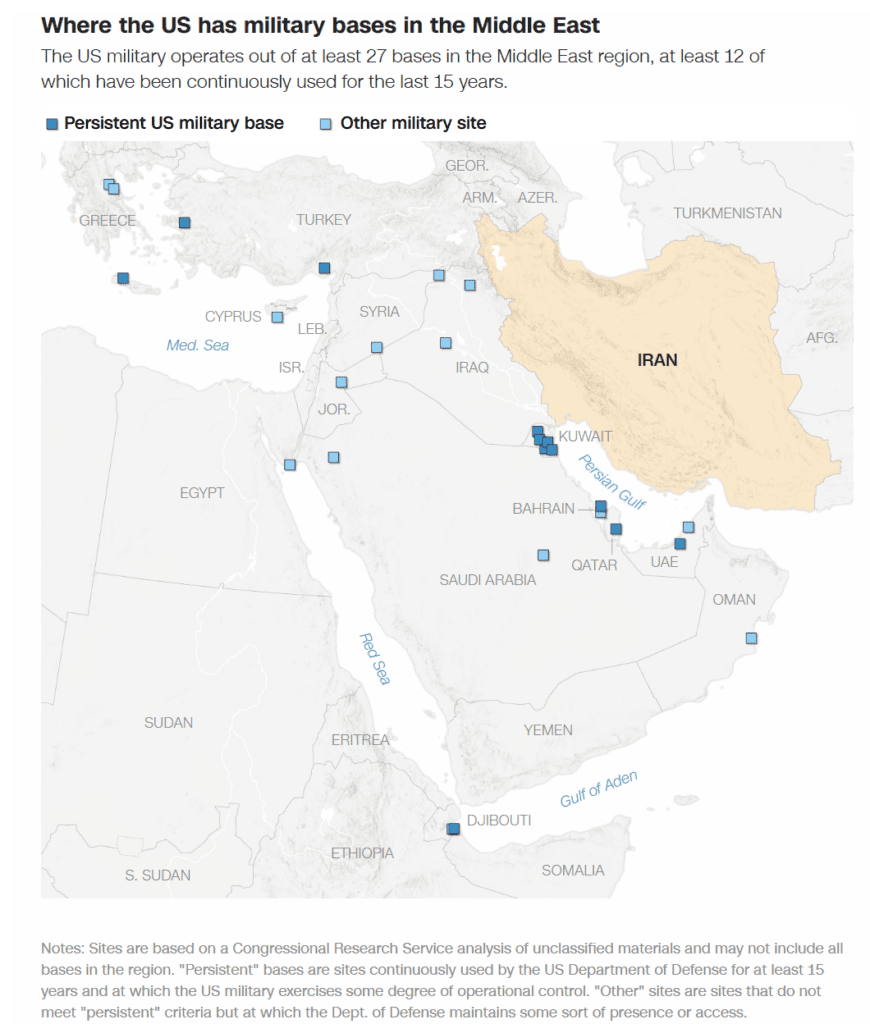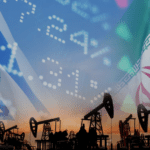Iran has launched retaliatory missile strikes on US military bases in Qatar and Iraq, intensifying the already volatile situation across the Middle East after US airstrikes destroyed three Iranian nuclear facilities over the weekend.
According to a US defense official, Iran fired short- and medium-range ballistic missiles toward the Al Udeid Air Base in Qatar, which is home to the largest US military presence in the region. No US casualties have been reported, and Qatar’s air defenses successfully intercepted the attack.
Advance Warning and Symbolic Strikes
Iran gave Qatar advance notice of the attack in a bid to avoid casualties and leave diplomatic space open, multiple sources confirmed. Iranian state media called the strike part of “Operation Besharat al-Fath” (“Blessings of Victory”). A senior US official told CNN that the Trump administration was aware retaliation was coming and had preemptively moved military aircraft out of the region.
Iran’s Supreme National Security Council claimed the number of missiles launched exactly matched the number of bombs the US dropped on Iran’s nuclear sites — in what Tehran framed as a symbolic yet forceful response.
Qatar Says Situation Stable
Despite the attack, Qatar’s Interior Ministry stated the security situation “remains stable”, with no need for public concern. Residents of Doha reported loud explosions and missile trails in the sky, but no injuries or damage were confirmed. Satellite imagery showed that US aircraft had already been relocated from the base days before the strike.
Massive US Military Presence in the Region
Iran’s attack underscores the deep US military footprint in the Middle East. As of recent estimates, over 40,000 American troops are stationed across the region, including:
- Kuwait: 13,500
- Qatar: 10,000
- Bahrain: 9,000
- United Arab Emirates: 3,500
- Jordan: 3,000
- Saudi Arabia: 2,700
- Iraq: 2,500
- Turkey: 1,465
- Syria: 1,300

These deployments have made several countries potential flashpoints amid growing hostilities between the US, Iran, and Israel.
Trump Holds Back—for Now
President Donald Trump is monitoring the situation from the White House Situation Room, alongside Defense Secretary Pete Hegseth and Joint Chiefs Chairman Gen. Dan Caine. According to Axios, the Trump administration had prior intelligence of the Iranian strikes but has chosen not to escalate further at this time.
While Trump has claimed the US airstrikes “completely obliterated” Iran’s nuclear sites, he has also reportedly expressed reluctance to deepen US military involvement in the region — unless necessary.
Oil Markets Rattled, Then Recover: Oil initially spiked 6% on fears of escalation, then plunged 4% as markets digested Iran’s controlled, symbolic retaliation. Trump warned energy markets to “KEEP OIL PRICES DOWN” on Truth Social, adding “DRILL BABY DRILL!”

Qatar, Iran, and the Regional Powder Keg
Qatar has formally condemned the attack on its territory, calling it a “flagrant violation of sovereignty”, while asserting the right to respond proportionally. Iran’s Revolutionary Guard issued a statement warning that it will never leave “any aggression against Iran’s sovereignty unanswered.”
Meanwhile, Russia has doubled down on its support for Tehran, calling their partnership “unbreakable,” and Putin hosted Iran’s Foreign Minister in Moscow today.
As the world watches, the coming days will be critical in determining whether this escalation leads to broader war or whether behind-the-scenes diplomacy can cool tempers in one of the world’s most militarized and volatile regions.

Disclosure: This article does not represent investment advice. The content and materials featured on this page are for educational purposes only.
Related:
Markets Brace for Chaos as Strikes, Inflation, and FED: What to watch this week
Iran–Israel–US Conflict Erupts: Nuclear Strikes, Hormuz Threats, and Global Fallout
US-Iran Conflict Escalates After Strikes on Nuclear Sites: What We Know So Far
US Hits Iran’s Nuclear Sites — Iran Strikes Back as War Escalates
Rising oil prices, inflation fears, and geopolitical volatility unsettle investors










